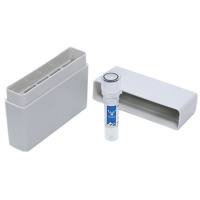Central to the rapid growth in the study and application of recombinant antibodies in recent years is the ability to reliably and cost-effectively produce large quantities of functional protein. In contrast to glycosylated whole monoclonal antibodies (MAbs), functional derivatives (antibody fragments) carrying antigen (Ag)-binding activities, and comprising at minimum the antibody variable heavy- and light-chain domains, can be readily produced in bacterial cells (1 ). The range of antibody (Ab) fragments that can be produced in this way includes F(ab)2 and Fab′, which can also be generated by proteolytic digestion of MAb, and smaller variants such as Fv, scFv, and scAb (single-chain antibody). Even single domains that comprise only the heavy-chain or the light-chain variable region can display Ag-binding activity, although these are not discussed specifically in this chapter. The smallest derivatives that retain the Ag-binding specificity of parental MAbs are Fv fragments. However, as the two domains are held together only by non-covalent hydrophobic interactions, they are prone to dissociate. This can be overcome by chemical crosslinking or the introduction of inter-chain disulfide bonds, or more often by the inclusion of a short peptide linker into expression constructs to produce scFv. Further variants include the addition of a range of suitable (C-terminal) tags for the purification or detection of expressed protein, such as a human Cκ domain (scAb) (2 ), c-myc, or hexahistidine.






